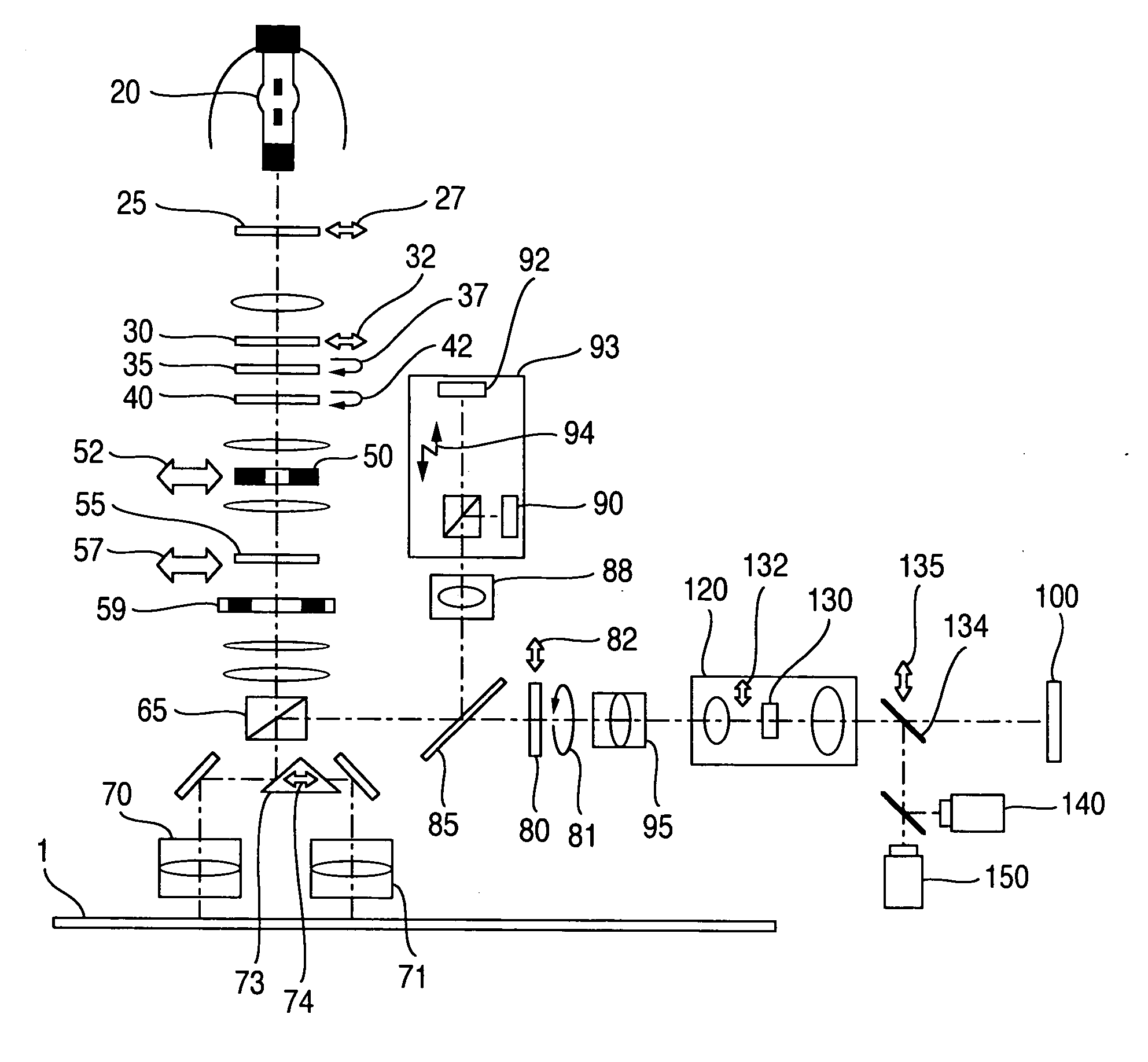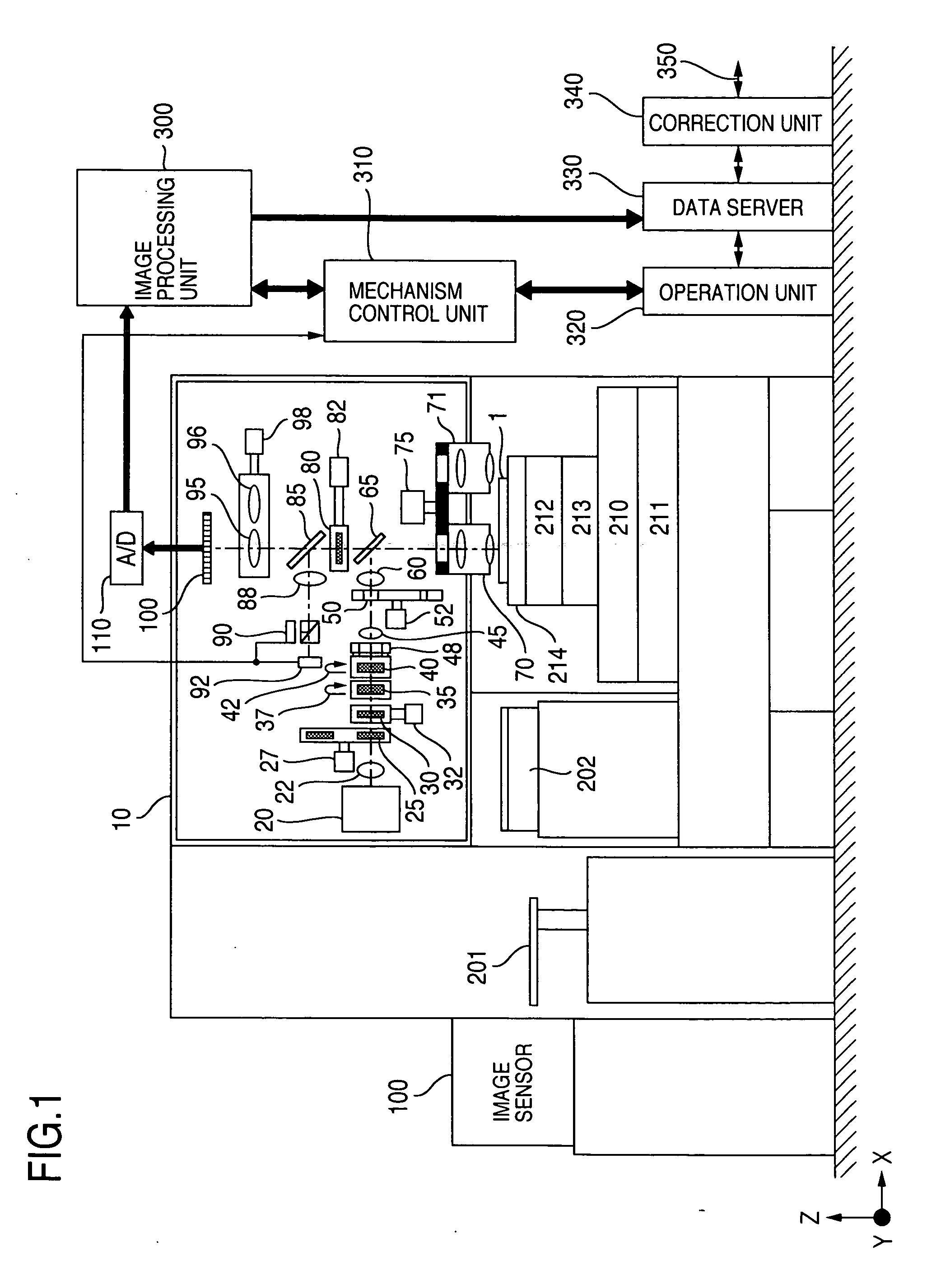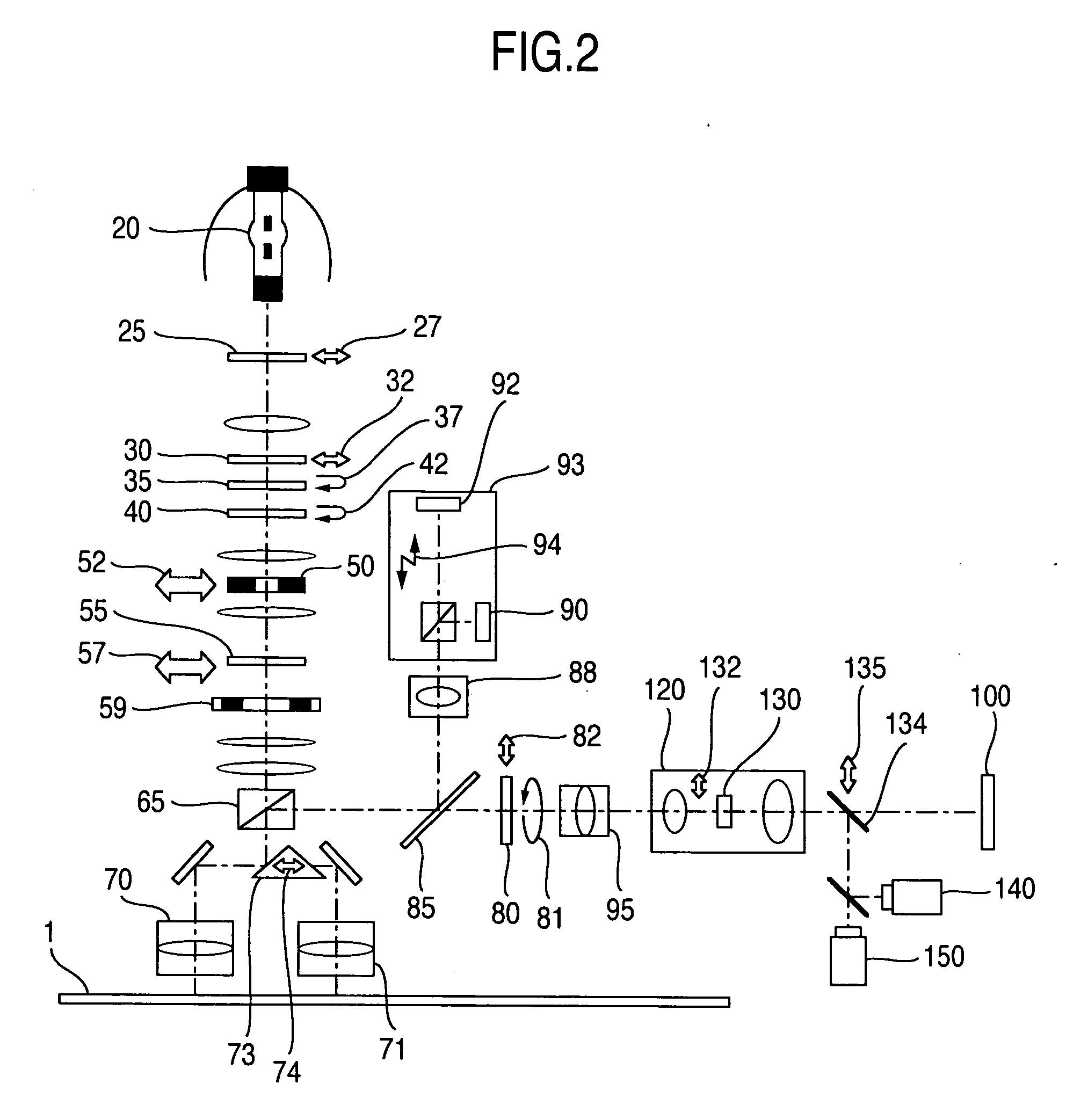Method and apparatus for detecting defects
a technology of defects and grayscale depth, applied in the field of microfine pattern inspection, can solve the problems of insufficient large grayscale depth of defects, and time-consuming to find optimal conditions, so as to reduce the grayscale depth of pseudo defects, improve the grayscale depth of defects, and quick select
- Summary
- Abstract
- Description
- Claims
- Application Information
AI Technical Summary
Benefits of technology
Problems solved by technology
Method used
Image
Examples
embodiment 1
[Embodiment 1]
[0031] A basic construction of an optical defect inspection apparatus according to this invention is shown in FIG. 1. A wafer 1 is stored in a hoop 100 and loaded into a notch detection unit 202 by a wafer loader 201. The wafer 1, that has its notch detected by the notch detection unit 202 and is prealigned, is attracted to a wafer chuck 214 mounted on an X stage 210, a Y stage 211, a Z stage 212 and a θ stage 213. Above the wafer 1 is arranged an optical system 10 to detect an image of a wafer surface (this figure shows a construction of a bright field detection optical system using a falling light illumination). A light source 20 emits light of a wide wavelength band and may use such lamps as Xe lamp, ultrahigh pressure Hg lamp, Hg—Xe lamp and halogen lamp. Light from the lamp 20 passes through a lens 22, a wavelength selection filter 25 and a polarizer 30. The wavelength selection filter 25 is, for example, an interference filter or a colored glass having an absorbi...
embodiment 2
[Embodiment 2]
[0100] A detection system of microscope is largely classified into a bright-field detection and a dark-field detection. Depending on the detection principle, some defects are easily detected and some are not. For example, the bright-field detection system can easily detect small-step thin film residues, fine shorted defects and pattern shape anomalies. The dark-field detection system can advantageously detect stepped defects, such as foreign matters and scratches. In metal wiring patterns (e.g., aluminum wiring), grains may occur on the pattern of a surface. The grains have little adverse effects on the electrical characteristics of devices and thus should preferably not be detected as defects. For this reason, they are called pseudo defects and a defect decision threshold in the inspection apparatus needs to be adjusted in a way that does not detect the grains. As for the grains, a composite illumination of the bright- and dark-field illuminations may be used to reduc...
PUM
 Login to View More
Login to View More Abstract
Description
Claims
Application Information
 Login to View More
Login to View More - R&D
- Intellectual Property
- Life Sciences
- Materials
- Tech Scout
- Unparalleled Data Quality
- Higher Quality Content
- 60% Fewer Hallucinations
Browse by: Latest US Patents, China's latest patents, Technical Efficacy Thesaurus, Application Domain, Technology Topic, Popular Technical Reports.
© 2025 PatSnap. All rights reserved.Legal|Privacy policy|Modern Slavery Act Transparency Statement|Sitemap|About US| Contact US: help@patsnap.com



